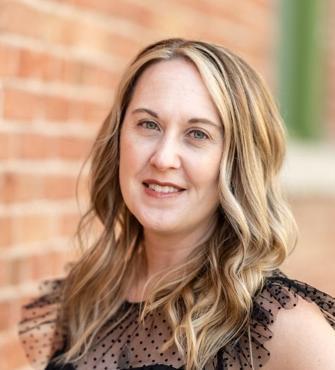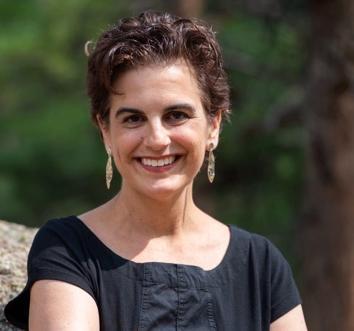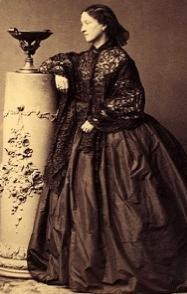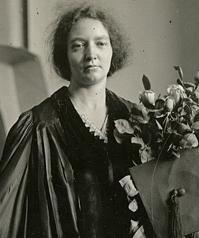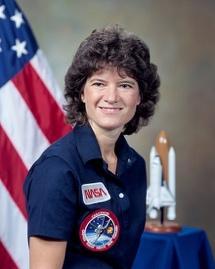Evening Concert Series 2024 – 2025 Season
Sara M. Snell Music Theater Sunday, March 23rd at 7:30 PM
Chamber Music by Women of the 21st Century
All That Remains (2023)
I. Faith
II. Hope
III. Love
Repair the World (2024)
My Dearest Ruth (2013/2024)
Julianne Doyle, clarinet
Emma Gierszal, Marimba
Keilor Kastella, piano
*World premiere of this version*
Theresa Martin (b. 1979)
Stacy Garrop (b. 1969)
Stacy Garrop (b. 1969)
Jonathan Brown, narrator *World premiere of this version*
~brief pause~
Beautiful and Powerful Sí Women (2024)
The Dearg Due Dances
The Bean Sí (Banshee) Screams
The Leannán Casts her Spell
Julianne Doyle and Jill Roberts, clarinet
Christine Hoerning, clarinet & bass clarinet
From Sea to Sky: Stories ofAmazing Women (2023) (20’)
Prologue:Amazing Women
Interlude I: TheAquarium – Jeanne Villepreux-Power
I. The Paper Nautilus: Translucent; Ocean waves, Rolling Waves
Interlude II:Anna May Wong
II. The Dawn is Ours: Like a Hollywood Soundtrack
Interlude III: Marie and Irène Curie
III.Atomic Waltz
Interlude IV: The Sky: Bessie Coleman, Sally Ride, NicoleAunapu Mann
IV. Dreamcatcher
Jonathan Brown, narrator
Anna Hendrickson, oboe
Julianne Doyle, clarinet
Carol Lowe, bassoon
MaryAlice Druhan (b. 1971)
Jenni Brandon (b. 1977)
PROGRAM NOTES
This program celebrates music by women and/or about women. There are a number of works that fit this theme, I arrived at this program after discovering a number of pieces by women, some I knew, and many I did not, there is a very long list to explore! In the fall, I shared a program of solo works by women who were contemporaries of famous composers of the “standard” clarinet repertoire. This recital celebrates living female composers who continue to generously contribute wonderful works to the 21st century clarinet repertoire. Each of these works will take you on a journey Life journeys are full of wonder, joy, beauty and discovery but can also be difficult, raw, ugly and painful. Regardless of your political beliefs, we all acknowledge that we are in difficult times and find ourselves divided. Music always perseveres and is our vehicle for expressing what we need to when words fail. Thank you to my amazing colleagues who have put in so much time and work into this program. I am truly honored to share the stage with these incredible human beings and artists. ~JKD
ALL THAT REMAINS (2023)
THERESAMARTIN (B 1979)
The inspiration behind this piece began with a nostalgic thought about the impermanence of things on this earth. Everything changes over time, no matter how hard we try to hold onto the past. People and places from our childhood only still exist, unchanged, in our memories, and our memory of a thing can never match that thing in reality. I was struggling to put my thoughts into words, let alone music, until I had the incredible gift of spending the day with my dear friend, who was diagnosed with an aggressive and late-stage form of cancer last year. Speaking with her about the piece I was writing, while also listening to her story of courage and faith, inspired me to quickly organize my thoughts and finish the piece.
The piece is in three movements, which are continuous: I. Faith, II. Hope, and III. Love. Movement I describes our journey through life: the busy-ness of life, going along at break-neck speeds, until a trial comes along. Mvt. IIisaboutsurvivalandtheprocessingofcomplexemotionswhileexperiencinggrief,throughwhichweultimately find hope and the courage to continue on our journey. Mvt. III is about simplifying our lives, realizing the important things in life, reflecting on the things which have changed, and relying on others’ help to continue onward.All that remains, in the end, is love. ~Theresa Martin
MY DEAREST RUTH (2013/2024)
STACY GARROP (B.1968)
The letter on which My Dearest Ruth is based was my father’s last written statement. My parents celebrated their 56th wedding anniversary in my father’s room at John Hopkins Hospital in Baltimore on Wednesday, June 23, 2010. The following day, my mother called to say Dad had taken a turn for the worse. I flew to Baltimore the next morning (Friday) and met Mom at Dad’s room. The doctors came in and told us there was nothing more they could do the cancer had progressed too far. All this time, Dad kept repeating one word: “Home.” So we made arrangements to bring him back to our apartment in Washington, D.C. While collecting his belongings from the hospital room, Mom pulled open the drawer next to Dad’s bed and discovered a yellow legal pad on which Dad had written this a week earlier:
Stacy Garrop
Theresa Martin
Ruth Bader Ginsberg
You are the only person I have loved in my life, setting aside, a bit, parents and kids and their kids, and I have admired and loved you almost since the day we first met at Cornell some 56 years ago.
Whatatreatithasbeentowatchyouprogresstotheverytopofthelegalworld!! I will be in JH Medical Center until Friday, June 25, I believe, and between then and now I shall think hard on my remaining health and life, and whether on balance the time has come for me to tough it out or to take leave of life because the loss of quality now simply overwhelms. I hope you will support where I come out, but I understand you may not. I will not love you a jot less. ~Marty
I should note one factual error: my parents met 59 years before the date of this letter, not 56. Obviously, Dad had their 56th anniversary in mind. We chose to keep the number 56 in the song.
My sister, Jane, and I commissioned Stacy Garrop to adapt the letter and set it to music as one of three songs by different women composers to be presented in 2013 as an 80th birthday tribute to our mother, U.S. Supreme Court
JusticeRuth Bader Ginsburg.Soprano Patrice Michaels sang thepremiere at theSupremeCourt with pianist Dana Brown on Saturday,April 6, 2013. -S.G.
REPAIR THE WORLD (2024)
STACY GARROP
How does a composer write a work in response to the horrific mass shooting that took place at Highland Park’s Independence Day parade in 2022? I started with research. Joanne Bernstein, a longtime Highland Park resident and the commissioner of this project, arranged for us to talk with a wide range of people about the event, from city organizers and first responders to witnesses and survivors. We also visited the current memorial site for the seven victims, along with a Kindness Rock Garden situated close to the memorial where people have placed painted rocks with messages. Additionally, we sorted through thousands of tags written by people who visited the temporary arch memorial erected near the parade route in the months after the event. As I ruminated over our research, I placed on my desk a stone I had brought from the Rock Garden that had the word “peace” written on it. Alongside it, I put a tag from the memorial arch that was inscribed with the Hebrew words tikkun olam and its corresponding English “repair the world.” The rock and the tag stayed as permanent fixtures on my desk as I completed the process of composing the piece. These objects became my guiding light as to how to respond musically in my work.
What is the role of music in response to such an event? I find three purposes: first, to honor the victims and survivors. Second, to reflect on the inherent goodness of the people who jumped into action to save the injured, who provided resources to the families of victims and to the survivors in the immediate aftermath, and who are continuously working to bring the community together since the terrible incident. Third, to attempt to bring healing to members of the community. In naming the work Repair the World, I call upon the Jewish concept of tikkun olam that we need to fix what is broken. This idea plays out musically in the piece, with melodies and chords first moving one way, then “fixing” themselves by reversing, as though getting repaired. The entire structure rewinds as well, with sections presenting themselves in reverse order halfway through the piece. I also wanted to express musically that our work to heal the world is ongoing. To represent this, I introduce a repeated note motive at the very opening of the piece; this motive is heard throughout the entire work. I end the piece with this same motive to signify that we still have work to do.
Additionally, I wish to make the universal concept of tikkun olam personal for all who perform and hear it. I invite all presenters and performers to translate the title into the language that is personal to them and their audiences, and to list the title in their chosen language in concert programs. May we all strive to heal the world together. After the beginning of the Israel-Hamas war in October 2023, musicians began performing Repair the World as a response to the crisis. The commissioner and I welcome musicians to play the work anywhere and everywhere people are dealing with loss of any kind, whether from gun violence, war, or even personal loss.
MARY ALICE DRUHAN (B.1971)
'Inspired by tales from Irish folklore, this collection features the actions of powerful, cunning and beautiful female spirits.
MaryAlice Druhan

The story of Dearg Due (translated as “red bloodsucker”) is a sad tale of a young and beautiful Irish woman who fell in love with a poor farmer. Her greedy father found the suitor unacceptable and instead of blessing their love, he forced her into an arranged marriage with a wealthy but abusive man. In her grief, she would later commit suicide and legend says that she arose from the grave to seek revenge on her father and husband. The spirit is said to rise once every year to suck the blood of her male victims. This Dracula-inspired Irish Sídhe appears to have arisen more recently from modern lore. The first movement showcases the youth and vibrance of the Dearg Due as she dances upon her victim’s graves.In Irish lore, the Banshee is storied to be either an old female spirit or fairy. Some tales say that the feared spirit rode alongside the Dullahan (the Irish Headless Horseman) in a black cart pulled by six black horses. Other legends portray that each Irish family has a Banshee of their own. Regardless of the interpretation, the wail of the Bean Sí (translated as “Banshee”) is agreed upon as a foretelling of impending doom, most often the death of a family member. The second movement loosely incorporates the “Musical notation of the ‘Banshee’s Cry’ from Fairy and Folk Tales of the Irish Peasantry (Yeats, 1888)” into a modern setting of impending doom.

Best described as a powerful fairy, the Leannán Sí is a cunning muse. Her beauty is said to have inspired poets and musicians, ultimately costing them their lives. In Irish lore, the Leannán Sí is said to have seduced men with her intelligence, creativity, and magic but that she ultimately abandoned them. Desperate for her love, they would die from depression, after which she would bring their bodies back to her lair. She is storied to have collected the blood of her men in a giant red cauldron which is said to be the source of her beauty and power. In the third movement, performers spin out elements of the fairy’s intelligence, creativity and magic into a complex contrapuntal web while the three voices also take turns sounding off individual notes of the traditional “A Sidhe Love Song” to lure men with a spinning siren song.’
JENNI BRANDON (B 1977)
This work celebrates a group of remarkable women who profoundly influenced our world. From the depths of the sea to the expansive skies and beyond, it chronicles the extraordinary contributions of women in science, the arts, and exploration. A diverse group of women were chosen to be represented in collaboration with Sonora Winds, the commissioners of this work. Our aim was to showcase the courage, curiosity, and inspiring stories of these women, representing a wide range of roles and achievements. Each segment dedicated to these women is preceded by an interlude featuring a brief narration of their accomplishments and stories of strength and resilience.
This work explores the following women:
The motherdaughter duo of Marie (18671934) and Irène Curie (18971956) who both won Nobel Prizes for their work in radioactivity
Jeanne VillepreuxPower (17941871), the inventor of the Aquarium and a leading researcher in cephalopods
Coleman (1892-1926) The first African American woman and Native American Woman to hold a pilot’s license.
Anna May Wong (1905-1961) – the first Chinese American film star in Hollywood who was a champion for Asian Americans in film and television.
Bessie
Sally Ride (1951-2012) The first American woman to fly in space.
Nicole Aunapu Mann (b. 1977) The first Native American woman in space.
Jenni Brandon


